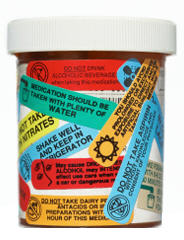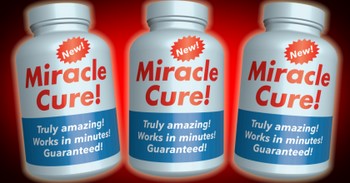Mental status is also known as Level of Consciousness (LOC).
– – – – – – – – – – – – – – – – – – – – – – – – – – – – – – – – – – –
Person, place, time, event
(their name is the last thing of these they’ll remember).
A person who is fully oriented to their surroundings and situation should be able to tell you their name,
where they are, what time it is (not to the exact hour but at least if it is morning or evening)
and what just happened to them.
Some sources refer to a person’s level of awareness of self, place, time, and situation.
An infant can’t answer questions about these, but you could call out their name and see if they respond.
– – – – – – – – – – – – – – – – – – – – – – – – – – – – – – – – – – –
I wrote this webpage so that my students can realize there are many, many reasons a person might faint or otherwise lose consciousness.
You can become familiar with all of these just by reading through the page twice.
Read it once, wait a week, and read it again.
(Students do not have to memorize all these, but depending on which program they are in, they might want to eventually.)
Reasons why a person might become unconscious or semi-conscious
Also known as:
Epilepsy
Insulin (diabetes, high or low blood sugar)
Overdose
Underdose
Trauma, especially head injury
Infection
Psychological/Poisoning
Stroke
any of AEIOUTIPS above
fever
meningitis
electrolyte imbalance (hyponatremia)
severe dehydration
shock and/or any condition that results in less blood flow (and therefor less oxygen) to the brain
conditions resulting from mental, emotional or behavioral disorders
severe drug withdrawal – (Delirium tremens or other) is sometimes mistaken for an acute psychiatric problem
SUDDEN Altered mental status, (and possibly a confused or combative state) AKA delirium, which can indicate a life-threatening condition,
can be caused by any of the above.
Note that this can be relatively common in elderly people and might seem like dementia, but is not.
infections including urinary tract infections, a wound, pneumonia
cancer spreading to the brain and causing hallucinations
a stroke
head injury with intracranial bleeding
severe burns
use of or withdrawal from alcohol/drugs
poisoning from lead, mercury, carbon monoxide, pesticides
chronic lung disease
fright, stress or excitement
tight clothing at neck
carbon monoxide poisoning
dehydration, especially severe dehydration brought on by diarrhea, vomiting or sweating, especially if the victim has not been drinking enough fluids
slow gastrointestinal bleeding with or without pain
blood volume changes (stood up too fast after prolonged sitting or lying down (more likely for pregnant, elderly), after a large meal (especially with alcohol)) If getting up too quickly sometimes makes you faint, you can move your legs to help your blood move before you stand up and make it a habit to stand up slowly and carefully.
diarrhea
inflammation of inner or middle ear
liquor
panic disorders and hyperventilation
dysrhythmia causing a fast heartbeat
a very slow heart rate
standing too long, especially in the heat
panic disorders and hyperventilation
benign hyperventilation: an anxious person (fear of heights, animals, etc.) hyperventilates (breathes rapidly and deeply) which causes dizziness, a sensation of choking, tingling in hands & feet, chest pain &/or tightness, blurred vision and more. Since these symptoms are close to those of a heart attack or other serious problem, they can cause more concern and more hyperventilation, sometimes leading to fainting.
(No, do not have them breathe into a paper bag.)
some medications for high blood pressure or heart disease
recent arrival at high altitude
Sugar – diabetic – (or low blood sugar – hypoglycemia or hyperglycemia) (When did they last eat or drink?)
Temperature – extreme high or cold temperature (hypothermia, hyperthermia)
Oxygen – abnormal levels of oxygen, (see also the A for altitude below)
Pressure – increasing intracranial pressure (ICP) (brain swelling) due to head trauma / concussion / traumatic brain injury (TBI), bleeding in the brain, high-altitude cerebral edema (HACE), stroke, heat stroke or prolonged lack of oxygen example: near drowning. Symptoms can include loss of memory as to the event that caused the concussion, especially persistent disorientation. More severe injury and more ICP if the victim is not fully oriented to person, place, time and event.
Electricity – trauma from electric shock (lightning strike or near strike, household current from a loose or bare wire, boom box falls into a swimming pool when not connected to a GFI outlet (special type of outlet, a ground fault circuit interrupter (GFCI))
Altitude – high-altitude pulmonary edema (HAPE) or high-altitude cerebral edema (HACE)
Toxins – drugs, alcohol, poisons, overdose on common pain relievers, intentional overdose, mushrooms, carbon monoxide, food poisoning, chlorine gas, bites/stings
Salts – low sodium or potassium levels can change the brain’s conductivity
– – – – – – – – – – – – – – – – – – – – – – – – – – – – – – – – – – –
Please note that altered mental status can be caused by
a combination of medicines (especially if a patient is not told which they can or can not take together)
or combining medications with alcohol,
or not taking the proper dose(s) at the proper time(s) – If you do not understand label instructions, talk to your pharmacist or doctor before taking the medicine.
or taking the wrong medication (Turn on a light when taking medicines so you don’t misread the label and make a mistake.)

and worth looking at: https://www.fda.gov/drugs/buying-using-medicine-safely/medication-health-fraud where it says:
“FDA (U.S. Food and Drug Administration) has found more than 1,000 fraudulent products that make false or unproven claims about their ability to help with health issues.
Fraudulent products may be contaminated with dangerous hidden ingredients.
There is no guarantee fraudulent products will work, and they may be a waste of money. They also can pose a serious risk to your health. You may even end up in the hospital if you use them.
Fraudulent products are sold online, in stores and at gas stations.
These products are marketed and sold without FDA review and approval.”

– – – – – – – – – – – – – – – – – – – – – – – – – – – – – – – – – – –
(Note to on-line users not in my classes: this is a study sheet. It is not complete instruction in first aid or the topic named in the webpage title.)
The author of this webpage, (written as a homework reading assignment for my students), does not give any warranty, expressed or implied, nor assume any legal liability or responsibility for the accuracy, completeness, or usefulness of any information, product, or process included in this website or at websites linked to or from it. Users of information from this website assume all liability arising from such use.
– – – – – – – – – – – – – – – – – – – – – – – – – – – – – – – – – – –